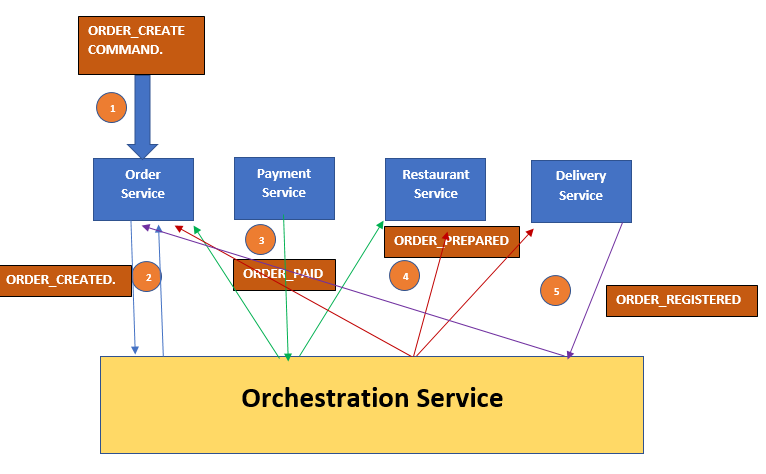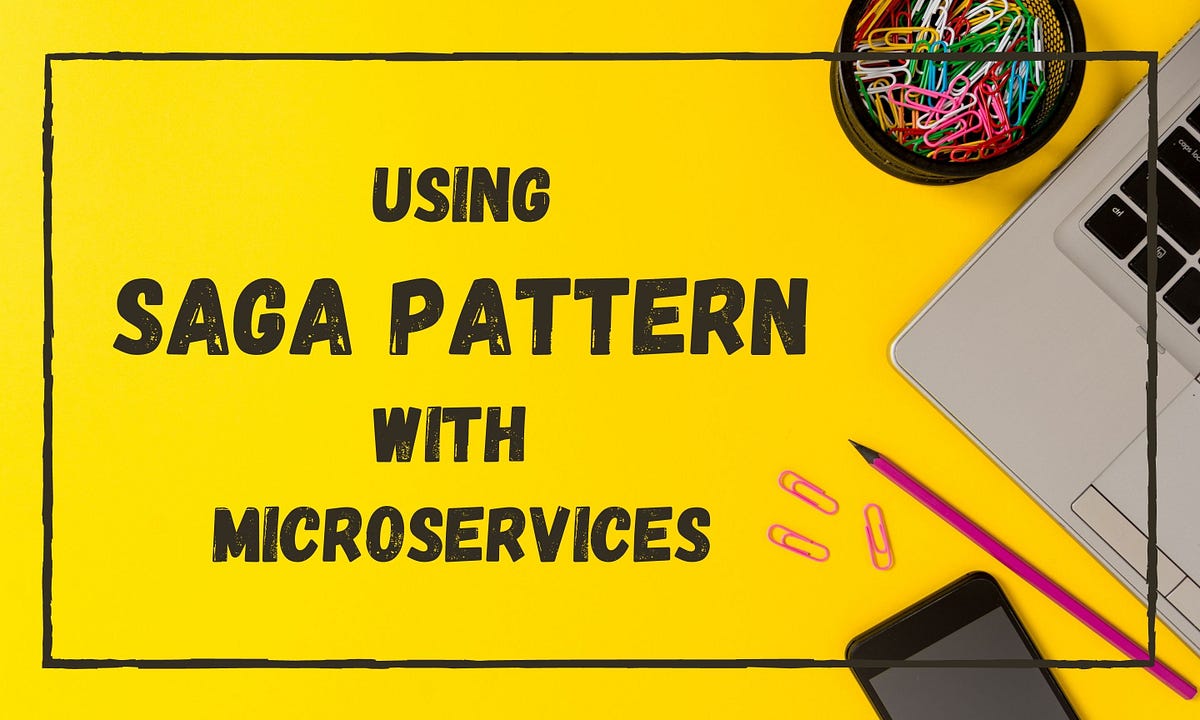The Ultimate Guide to Saga Pattern Architecture

Unlocking the Power of Saga Pattern Architecture: A Comprehensive Guide

In the intricate world of software architecture, the Saga pattern stands out as a powerful tool for managing complex distributed transactions. This guide aims to demystify the Saga pattern, offering a comprehensive understanding of its architecture, benefits, and implementation strategies. By the end, you'll be equipped with the knowledge to harness the full potential of this pattern in your software development projects.
Understanding the Saga Pattern Architecture

The Saga pattern, rooted in the principles of distributed systems, provides a robust solution for managing transactions across multiple services or components. Unlike traditional transactional approaches, which rely on atomicity and ACID principles, the Saga pattern embraces a different paradigm. It breaks down complex transactions into a series of smaller, independent steps, each with its own compensation mechanism.
At its core, a Saga is a sequence of local transactions, or steps, that are coordinated to achieve a global goal. Each step is a self-contained unit of work, typically involving a single service or component. When a Saga is initiated, these steps are executed in a specific order, with each step building upon the previous one. If any step fails or needs to be rolled back, the Saga employs a compensation strategy to undo the effects of the previous steps, ensuring data integrity and consistency.
Key Components of the Saga Pattern
The Saga pattern architecture consists of several key components, each playing a vital role in the execution and management of the Saga:
- Saga Orchestrator: This component is responsible for coordinating the entire Saga. It initiates the Saga, manages the execution of steps, and handles any compensation actions required. The Saga Orchestrator ensures that the Saga progresses logically and that any failures are appropriately handled.
- Saga Steps: These are the individual units of work that make up the Saga. Each step is responsible for performing a specific task, such as creating a new record, updating existing data, or triggering a downstream service. Saga steps are designed to be independent, allowing for flexible and modular architecture.
- Compensation Logic: Compensation logic is a crucial aspect of the Saga pattern. It defines the actions needed to undo the effects of a failed step. When a step fails, the compensation logic is executed to revert any changes made by the previous steps, ensuring that the system remains in a consistent state.
- Saga Store: The Saga store is a dedicated database or storage system that maintains the state of the Saga. It tracks the progress of each Saga instance, stores the outcomes of steps, and provides a persistent record of the Saga's execution. The Saga store ensures that the Saga can be resumed or restarted if needed.
The Role of Asynchrony in Sagas
Asynchrony is a fundamental characteristic of the Saga pattern. Saga steps are typically executed asynchronously, allowing for efficient and non-blocking execution. This asynchronous nature enables the Saga to handle long-running processes and integrate with various services without blocking the system. However, it also introduces challenges related to coordination and consistency, which the Saga pattern elegantly addresses.
Benefits of Adopting the Saga Pattern
The Saga pattern offers a myriad of benefits for software architects and developers, especially when dealing with complex distributed systems. Here are some key advantages:
Improved Resilience and Fault Tolerance
The Saga pattern excels at handling failures and ensuring fault tolerance. By employing compensation logic, the Saga can gracefully recover from failures and maintain data consistency. If a step fails, the Saga can compensate for the previous steps, rolling back any changes and ensuring that the system remains in a stable state.
| Saga Step | Action | Compensation Logic |
|---|---|---|
| Step 1 | Create new record | Delete the created record |
| Step 2 | Update existing data | Revert the data to its original state |
| Step 3 | Trigger downstream service | Notify the service to cancel the triggered action |

Enhanced Scalability and Flexibility
The Saga pattern's modular architecture promotes scalability and flexibility. By breaking down complex transactions into smaller, independent steps, the Saga allows for the addition or removal of steps without affecting the entire system. This modularity enables developers to easily scale the system, integrate new services, and adapt to changing requirements.
Support for Long-Running Processes
Sagas are particularly well-suited for managing long-running processes that involve multiple steps and services. The asynchronous nature of Saga steps allows the system to continue processing other transactions while a Saga is in progress. This feature is crucial for real-time applications, where immediate responses are not always feasible.
Distributed Consistency and Data Integrity
The Saga pattern ensures distributed consistency and data integrity across multiple services. By coordinating the steps and employing compensation logic, the Saga maintains the consistency of data across the system. This is especially valuable in distributed systems, where maintaining data consistency can be challenging.
Implementing the Saga Pattern: Best Practices
Implementing the Saga pattern requires careful planning and consideration of various factors. Here are some best practices to guide your implementation:
Define Clear Boundaries and Responsibilities
Clearly define the boundaries of each Saga step and its responsibilities. Each step should have a well-defined purpose and be designed to perform a specific task. This modular approach simplifies maintenance and allows for easy modifications in the future.
Use Asynchronous Messaging
Leverage asynchronous messaging mechanisms, such as message queues or event-driven architectures, to communicate between Saga steps. Asynchronous messaging ensures that the Saga can handle multiple steps concurrently and that the system remains responsive.
Design Robust Compensation Logic
Invest time in designing effective compensation logic for each Saga step. Compensation logic should be able to undo the effects of the previous steps, ensuring that the system can recover from failures. Test your compensation logic thoroughly to ensure its reliability.
Utilize a Dedicated Saga Store
Implement a dedicated Saga store to track the progress and state of each Saga instance. The Saga store should be designed to handle high throughput and provide fast access to Saga data. Consider using a distributed database or a specialized Saga store solution to meet the performance and scalability requirements.
Monitor and Analyze Saga Execution
Implement monitoring and analytics tools to track the execution of Sagas. Monitoring helps identify potential issues, such as long-running Sagas or frequent failures. Analytics can provide insights into the performance and behavior of the Saga pattern, allowing you to optimize and fine-tune your implementation.
Real-World Applications of the Saga Pattern

The Saga pattern finds application in various real-world scenarios, particularly in distributed systems and microservices architectures. Here are a few examples:
E-commerce Transactions
In an e-commerce platform, a Saga can be used to manage the entire purchase process. This could involve steps such as adding items to the cart, processing payment, updating inventory, and generating an order confirmation. If any step fails, the Saga can compensate by rolling back the previous steps, ensuring that the customer's order is not partially completed.
Travel Booking Systems
Travel booking systems often involve multiple steps, such as flight booking, hotel reservation, and car rental. A Saga can coordinate these steps, ensuring that if any part of the booking fails, the entire booking is canceled, and the customer's funds are refunded. This maintains consistency and prevents partial bookings.
Financial Transactions
Financial transactions, such as fund transfers or loan approvals, can be managed using the Saga pattern. A Saga can coordinate the steps involved, such as debiting one account, crediting another, and updating transaction records. If any step fails, the Saga can compensate by reversing the transaction, ensuring that funds are not misplaced.
Future Considerations and Evolution
As software systems continue to evolve, the Saga pattern is likely to adapt and improve. Here are some future considerations and potential directions for the Saga pattern architecture:
Integration with Event-Driven Architectures
The Saga pattern can benefit from the rise of event-driven architectures. By leveraging events and event-based messaging, Sagas can become even more responsive and adaptable. Events can trigger Saga steps, and compensation logic can be triggered by specific events, further enhancing the flexibility and scalability of the pattern.
AI and Machine Learning Integration
Artificial Intelligence and Machine Learning techniques can be applied to optimize the Saga pattern. Machine Learning algorithms can analyze Saga execution patterns, identify potential bottlenecks, and suggest optimizations. AI can also assist in designing more efficient compensation logic, ensuring faster recovery from failures.
Security and Privacy Considerations
As the Saga pattern gains popularity, security and privacy considerations become crucial. Ensuring the security of Saga data and protecting sensitive information during Saga execution will be essential. Implementing robust encryption, access controls, and privacy measures will be key aspects of future Saga pattern implementations.
Conclusion
The Saga pattern architecture offers a powerful and flexible solution for managing complex distributed transactions. By embracing the Saga pattern, software architects and developers can build resilient, scalable, and consistent systems. With its focus on modularity, fault tolerance, and compensation, the Saga pattern is an invaluable tool for modern software development. As the pattern continues to evolve, its potential for innovation and improvement remains vast.
What is the difference between the Saga pattern and traditional transactions?
+The Saga pattern differs from traditional transactions in its approach to managing complex distributed transactions. Traditional transactions rely on atomicity and ACID principles, ensuring that all operations within a transaction are completed or rolled back as a whole. In contrast, the Saga pattern breaks down complex transactions into smaller, independent steps, each with its own compensation mechanism. This allows for more flexibility and fault tolerance, as individual steps can be rolled back without affecting the entire transaction.
How does the Saga pattern handle failures and rollbacks?
+The Saga pattern employs compensation logic to handle failures and rollbacks. When a step within a Saga fails, the compensation logic is triggered to undo the effects of the previous steps. This ensures that the system remains in a consistent state, even if individual steps encounter issues. The compensation logic is designed to revert any changes made by the failed step, maintaining data integrity.
Can the Saga pattern be used in microservices architectures?
+Absolutely! The Saga pattern is particularly well-suited for microservices architectures. In a microservices environment, where services are distributed and independent, the Saga pattern can coordinate transactions across multiple services. Each microservice can handle a specific step in the Saga, and the Saga orchestrator ensures the overall coordination and consistency of the transaction.
What are some challenges in implementing the Saga pattern?
+Implementing the Saga pattern comes with its own set of challenges. One of the main challenges is ensuring the consistency of data across multiple services or components. As the Saga pattern involves asynchronous steps, maintaining data integrity can be complex. Additionally, designing effective compensation logic and handling edge cases require careful consideration and testing.


